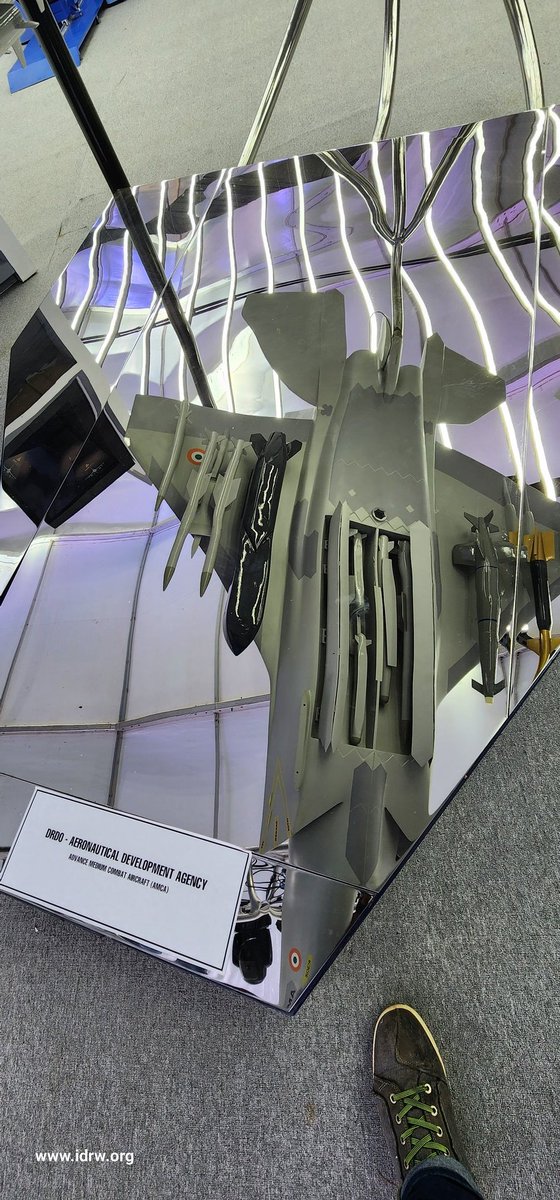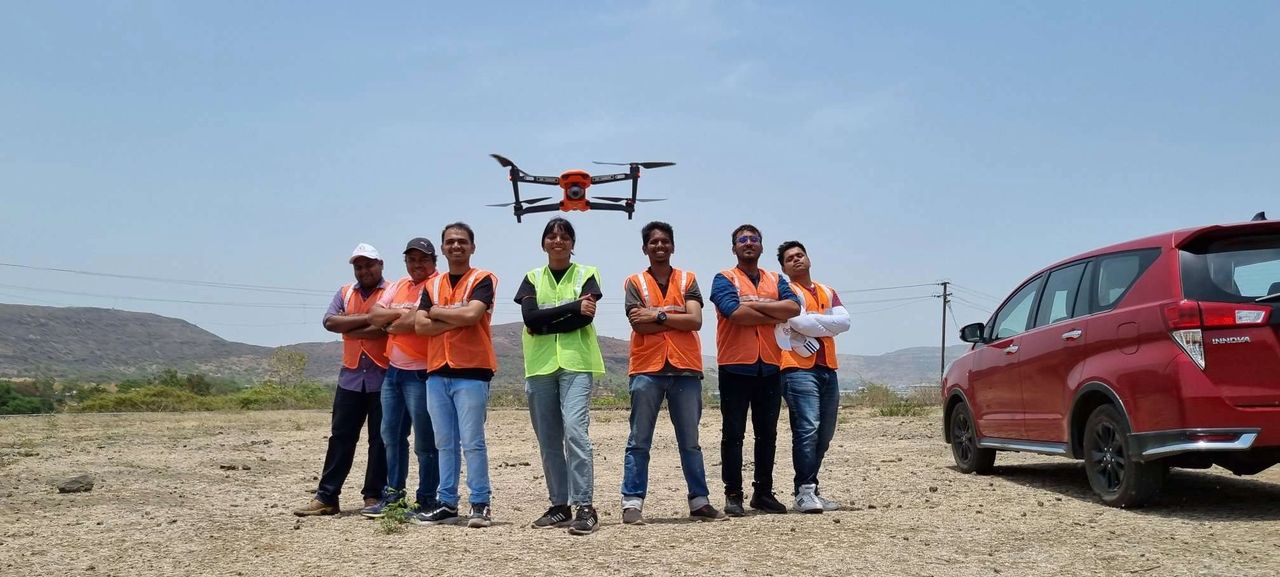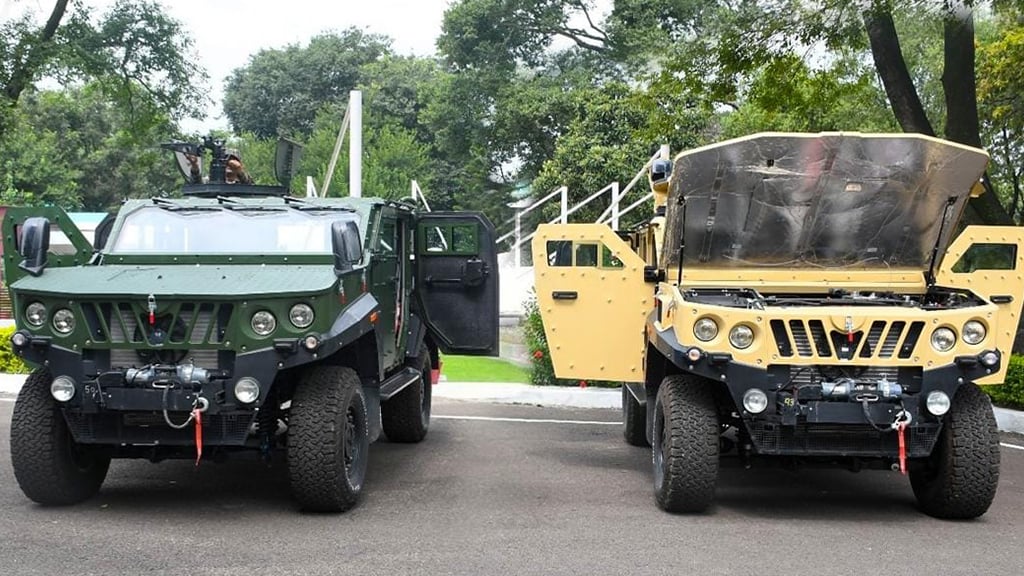SOURCE: RAUNAK KUNDE / NEWS BEAT / IDRW.ORG


In a candid interview with idrw.org, an anonymous serving Indian Naval official has expressed concerns over the suitability of the Rafale M fighter jet for operations on India’s aircraft carriers. According to the official, the decision to procure the Rafale M was made despite known limitations, echoing a pattern observed with the earlier acquisition of the MiG-29K.
One of the significant shortcomings of the Rafale M is its non-foldable wings, which restrict its manoeuvrability and storage on the confined decks of India’s current aircraft carriers, INS Vikramaditya and INS Vikrant. This design flaw necessitates more deck space for each aircraft, potentially reducing the number of aircraft that can be deployed.
Continue readingSOURCE: RAUNAK KUNDE / NEWS BEAT / IDRW.ORG


India’s ambitious Advanced Medium Combat Aircraft (AMCA) program is progressing towards its goal of rolling out the first prototype by the end of 2026 or early 2027. Developers at the Aeronautical Development Agency (ADA) are not only focusing on building a state-of-the-art 5th-generation fighter jet but also ensuring it is affordable for the Indian Air Force (IAF) and appealing to global markets.
According to an ADA official speaking to idrw.org, the initial prototypes of the AMCA, equipped with maximum hardware to validate the program, indicate that the production model will be among the most cost-effective 5th-generation fighter jets available. The goal is to provide advanced capabilities—stealth design, sensor fusion, and superior avionics—at a competitive price point without compromising on quality or performance.
Continue readingSOURCE: RAUNAK KUNDE / NEWS BEAT / IDRW.ORG


While India and Indonesia left no stone unturned to take bilateral ties to the next level during the recent visit of President Prabowo Subianto, the Chief Guest for the Republic Day celebrations, the much-touted talks for sealing the deal on BrahMos missiles did not witness much progress. Multiple sources indicate that Jakarta wants further discussions on the multi-million-dollar purchase from Delhi.
Indonesia has sought more time from India to move ahead with the BrahMos missile deal, signalling that additional negotiations are required before finalizing the agreement. Despite the delay, a defence delegation from Jakarta is expected to visit Delhi soon to strategize and iron out the remaining details of the procurement process.
Continue readingSOURCE: AFI


Adani Defence, a leading entity in India’s defense manufacturing sector, has announced that the Long Range Glide Bomb (LRGB), named GAURAV, has now entered the Low Rate Initial Production (LRIP) phase. This marks a significant milestone in enhancing India’s precision strike capabilities from the air.
GAURAV, an indigenously designed and developed 1,000 kg class glide bomb, is engineered to strike targets with high precision over long distances. Once launched from an aircraft, GAURAV uses a sophisticated hybrid navigation system, combining Inertial Navigation System (INS) and Global Positioning System (GPS) data, to steer accurately towards its target. This system allows for increased accuracy, even in GPS-denied environments, making GAURAV a formidable weapon in modern warfare scenarios.
Continue readingSOURCE: AFI


A recent analysis by the authoritative website globalfirepower.com has spotlighted the global pecking order in aerial military might, evaluating countries based on their total aircraft inventory which encompasses fighter jets, helicopters, and support aircraft. According to the report, the world’s most formidable air forces are led by the United States, with Russia and China securing the second and third positions, respectively.
India has been ranked fourth in this comprehensive assessment, showcasing its significant air power with an inventory of 2,296 aircraft, including helicopters, fighter jets, and support aircraft. This ranking underscores India’s ongoing efforts to modernize and expand its air force capabilities amidst regional security challenges.
Continue readingSOURCE: AFI


DroneAcharya Aerial Innovations Limited proudly announces the securing of a significant contract valued at INR 18,70,500 from the Indian Army. This contract marks a pivotal step in the company’s journey towards enhancing the technological capabilities of the nation’s defense forces.
Under the terms of this contract, DroneAcharya will establish a specialized Drone Training Lab dedicated to the training of army personnel. The initiative includes the provision of essential hardware and comprehensive drone flying lessons tailored for military applications. The project officially began on January 27, 2025, with a completion deadline set for March 28, 2025.
Continue readingSOURCE: AFI


Bharat Electronics Limited (BEL), India’s premier defense electronics company, has announced that it has secured additional orders worth Rs. 531 crore since its last disclosure on January 13. These new contracts span multiple domains, reaffirming BEL’s critical role in strengthening India’s defense and technology infrastructure.
With the latest additions, BEL’s total order book has further expanded, demonstrating the trust and confidence reposed in the company by various defense and civilian stakeholders. The company continues to reinforce its position as a key supplier of cutting-edge technology to the Indian Armed Forces and other strategic sectors.
Continue readingSOURCE: IDRW.ORG


In a significant step towards enhancing India’s naval capabilities, the Defence Research and Development Organisation (DRDO) has formally requested the Indian Navy to transfer one of its aging Kilo-class submarines. This move aims to utilize the vessel as a testbed for new technologies under the ambitious Project-76, which plans to introduce a next-generation class of submarines.
Project-76 is envisioned as a leap forward in India’s indigenous submarine manufacturing, focusing on creating advanced, air-independent propulsion (AIP)-equipped diesel-electric attack submarines. The project represents India’s commitment to reducing dependence on foreign technology while bolstering its maritime defense infrastructure.
Continue readingSOURCE: IDRW.ORG


Recent media reports suggesting that India is actively opposing Bangladesh’s prospective acquisition of JF-17 “Thunder” fighter jets have been contradicted by statements from the Indian Air Force (IAF). According to an IAF official speaking to idrw.org, the Indian government harbors no objections to this deal, refuting earlier narratives that portrayed India as vehemently against the procurement due to the aircraft’s origin from Pakistan and China, nations considered as adversaries by New Delhi.
Bangladesh has expressed interest in upgrading its air force capabilities, which currently rely on an aging fleet of F-7 and MiG-29 fighters. The JF-17, developed jointly by Pakistan and China, offers a modern alternative with its multi-role capabilities, which include air-to-air and air-to-ground missions. The interest was visibly demonstrated during a January visit by a high-ranking Bangladeshi military delegation, led by Lt. Gen. SM Qamarul Hassan, to Pakistan, where they showed keen interest in the JF-17 among other advanced defense systems.
Continue readingSOURCE: AFI


In a landmark event for India’s defence sector, the Anti Stealth VHF Radar, a product of collaboration between the Electronics and Radar Development Establishment (LRDE) and Bharat Electronics Limited (BEL), was officially launched today at BEL’s facility in Ghaziabad. This cutting-edge radar system, designed to counter stealth technology, represents a significant advancement in India’s Indigenous defence capabilities.
The newly unveiled radar system comes equipped with advanced surveillance features, including a ‘staring capability’ that allows for the detection of stealth targets at extended ranges. This technology is particularly noteworthy as it challenges the effectiveness of stealth aircraft and other low-observable platforms, providing the Indian military with a strategic edge in aerial surveillance and defense.
Continue readingSOURCE: AFI


In a decision that has defense enthusiasts buzzing with excitement, India has chosen ThyssenKrupp Marine Systems (TKMS) over Spain’s Navantia for its next-generation submarine procurement under Project 75-India (P75I). This choice marks a significant step forward in India’s naval capabilities, particularly in stealth technology and strategic maritime operations.
The submarine on offer from TKMS is described as a next-generation design, boasting a faceted hull that introduces Low Observable (LO) features. This design enhances the submarine’s stealth capabilities, making it the 5th generation of the diesel-electric attack submarine (SSK) with an emphasis on reducing its acoustic and radar signatures. The innovative hull shape is a radical departure from traditional designs, aiming to deflect sonar emissions, thereby making the submarine less detectable by modern anti-submarine warfare (ASW) systems.
Continue readingSOURCE: AFI


In a significant step forward for unmanned aerial vehicle technology, NewSpace Research and Technologies has unveiled a new type of long-endurance helicopter UAV. This innovative aircraft stands out with its streamlined design, featuring a tail rotor that enhances efficiency and stealth capabilities. The sleek, aerodynamic shape promises improved flight dynamics, making this UAV a potential game-changer in aerial surveillance and reconnaissance.
The helicopter UAV is not just about its unique design; it boasts a sophisticated tri-sensor gimbal camera system, which suggests capabilities for comprehensive day and night surveillance, thermal imaging, and high-resolution photography. This setup is ideal for various applications, including border security, disaster management, and military intelligence gathering, offering versatility in operational environments.
Continue readingSOURCE: AFI


In an exciting development for India’s aerospace sector, Prateek Dhawan, co-founder of DG Propulsion, has shared significant updates on the testing of their jet engines. The company, known for its pioneering work in propulsion technology, recently conducted a rigorous test where their engines operated in a vertical configuration for a full hour. This test not only included variable throttle adjustments to assess responsiveness but also maintained the engines at full throttle for the majority of the time.
Dhawan took to social media to share this milestone, although he noted with regret that the third video of this test session was not recorded. Despite this, the success of the test is a clear indicator of DG Propulsion’s advancements. “Jetsuits can absolutely be built in India now,” Dhawan confidently asserted, signaling a pivotal moment for the company and the Indian aerospace industry at large.
Continue readingSOURCE: AFI


The Indian Army’s affection for the Mahindra Armored Light Specialist Vehicle (ALSV) is no secret within defense circles, but the key to this admiration largely lies in the vehicle’s heart – a formidable 3.2-liter, 215 HP multi-fuel diesel engine sourced from Spanish technology. This engine, combined with a versatile 4/6 speed automatic transmission, has significantly enhanced the vehicle’s performance and adaptability on the battlefield.
The engine in question, a product of Spanish engineering excellence, offers a unique multi-fuel capability, allowing it to run on both NATO-grade diesel and other alternative fuels, ensuring operational flexibility in varied terrains and under diverse conditions. With a power output of 215 horsepower, the ALSV is designed to provide robust performance, whether it’s navigating through the rugged terrains of the Himalayas or the sandy stretches of the Thar Desert. The torque output, peaking at 500Nm, ensures that the vehicle can handle heavy loads and maintain mobility even in challenging conditions.
Continue readingSOURCE: RAUNAK KUNDE / NEWS BEAT / IDRW.ORG

The Aeronautical Development Agency (ADA) has recalibrated the development schedule for the Twin Engine Deck-Based Fighter (TEDBF). This project had hit a snag due to delays in approvals from the Ministry of Defence (MoD). Classified as a ‘5th generation minus’ fighter jet, the TEDBF is poised to fulfil the Indian Navy’s need for a modern, carrier-capable combat aircraft.
After overcoming bureaucratic hurdles, ADA officials have announced a new timeline for the TEDBF. Originally, the first flight was aimed at 2026, but due to the extended review and approval processes, this has now been pushed to 2029. However, the induction into the Indian Navy’s fleet is set for a much later date, 2036, reflecting the extensive developmental and testing phases required for a deck-based fighter.
Continue reading